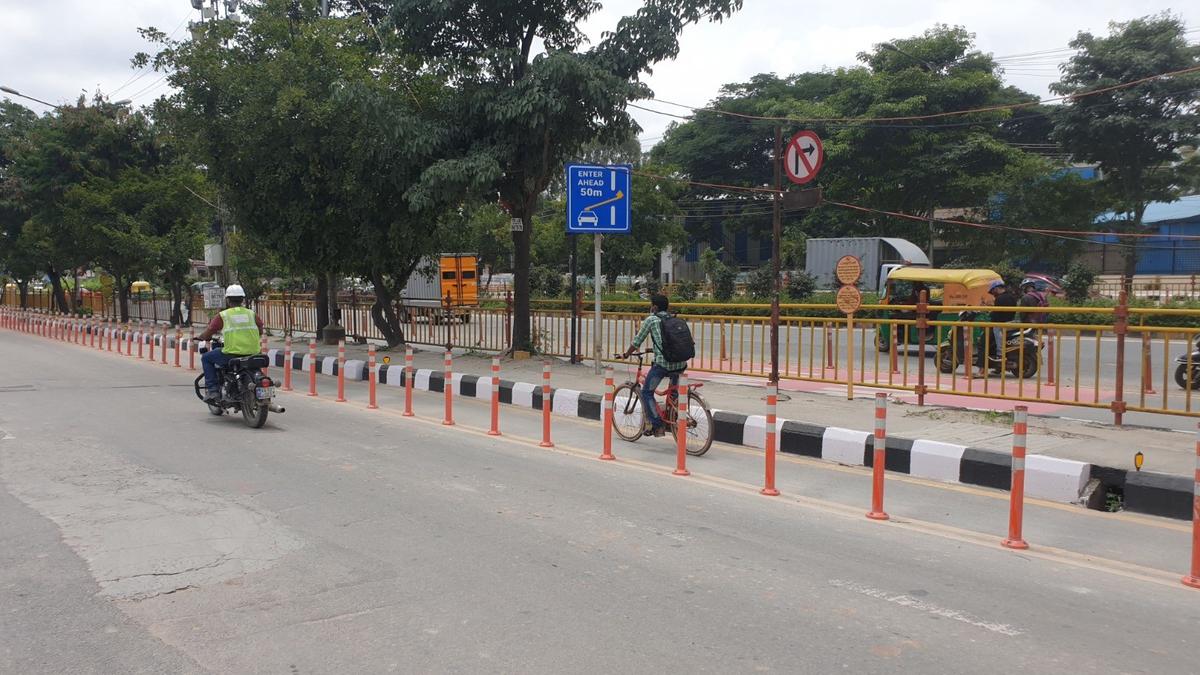
Why is active mobility necessary in India? | Explained
The Hindu
Active mobility in India is gaining attention due to increasing traffic congestion, pollution, and pedestrian deaths, promoting sustainable transport.
The story so far:
Sporadic reports of accidental deaths and injuries of pedestrians, cyclists, street-hawkers, and others in the metro cities of India are on the rise. While urban development in various metro cities include patches of dedicated service lanes for pedestrians and cyclists, motor vehicles tend to ply on them as well. As a result, the risk of accidents are as high on these pathways as on the main roads with vehicular traffic. In such a grim situation, active mobility is the need of the hour.
Active mobility refers to modes of transportation that use human power instead of a motorised form of mobility. Active modes of transport include walking, cycling, skateboarding, and other non-motorised modes that are used for travel and not recreational activities.
Active mobility in India has gained attention due to increasing traffic congestion, pollution, health concerns, and rising pedestrian deaths. This is accompanied by the growing importance of sustainable transport in national policies like the National Transit Oriented Development (NTOD) policy and the Smart Cities Mission (SCM), along with international efforts such as the Paris Agreement which emphasises reducing carbon emissions and promoting eco-friendly mobility.
Bengaluru’s first Bicycle Mayor, Sathya Sankaran, has been a key advocate for cycling and pedestrian-friendly infrastructure since 2018. His efforts contributed to the drafting of the Karnataka Active Mobility Bill, 2022. In 2020, Karnataka recorded the highest number of pedestrian deaths in the country at 13%. Therefore, the Bill aims to promote urban mobility through the protection of the rights of pedestrians and cyclists. The inherent goal of this bill is to provide a legal structure protecting and promoting active mobility, and ensuring equal access to public space. Several other States are also giving attention to active mobility. Delhi is expanding cycling tracks and pedestrian-friendly streets under its Delhi EV policy. Pune has implemented a Comprehensive Bicycle Plan and developed over 300 km of cycling lanes. Chennai is redesigning roads under the SCM to improve pedestrian safety, while Kochi has introduced a Public Bicycle Sharing (PBS) system to enhance last-mile connectivity.
As stated by the World Health Organization (WHO), active mobility in all its forms has economic, social, environmental, and health benefits. The economic benefits include reduced household expenditure on fuel and transportation and lower healthcare costs due to enhanced public health. It also boosts local businesses since pedestrian-friendly infrastructure attracts higher foot traffic.
Walking and cycling are sustainable modes of transport as compared to motorised vehicles due to their marginal carbon emissions. They enhance energy security and significantly reduce India’s 12% carbon emissions from road transportation. Cities with well-developed infrastructure for active transport report cleaner air and reduced traffic congestion. Moreover, active modes of transport are known to reduce the risk of chronic diseases, improve cardiovascular health, promote mental well-being, and enhance public health among citizens. It is a mode of transportation that makes cities more vibrant and climate-conscious.

 Run 3 Space | Play Space Running Game
Run 3 Space | Play Space Running Game Traffic Jam 3D | Online Racing Game
Traffic Jam 3D | Online Racing Game Duck Hunt | Play Old Classic Game
Duck Hunt | Play Old Classic Game











